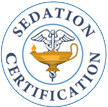For questions contact the Ohio Board of Nursing
Ohio Board of Nursing Reapproved: – March 9, 2022
Reviewed by Sedation Certification – December 30, 2023
State Sedation Policy – Yes
Can RN’s give sedation? – Yes
Can RN’s give Propofol/Ketamine? – Under Certain Circumstances – Intubated/Ventilated
Interpretive Guideline
Title: Registered nurse care of patients receiving intravenous moderate sedation for medical and/or surgical procedures.
The registered nurse responsible for monitoring the patient during the procedure should not engage in other activities that would divert the nurse’s attention from the patient.
Moderate sedation/analgesia is a drug-induced depression of consciousness during which patients respond purposefully to verbal commands, either alone or accompanied by light tactile stimulation. Reflex withdrawal from a painful stimulus is NOT considered a purposeful response. This definition, recognized by the American Association of Nurse Anesthetists and the American Society of Anesthesiologists, is utilized for the purpose of this Interpretive Guideline.
This Interpretive Guideline is not meant to include the provision of nursing care within a medical mobile transport unit and in clinical circumstances where the patient is intubated, or is being emergently intubated, and ventilated.
Guidelines for Registered Nurse administration of medications, and monitoring of patients receiving intravenous moderate sedation for medical/surgical procedures (Section 4723.01(B) Ohio Revised Code (ORC)):
The scope of practice for registered nurses may include administration of sedating medications for purposes of providing procedural moderate sedation, and to monitor the sedated patient prior to, during and after the procedure, in circumstances where the safety and well-being of the patient can be ensured through a supportive clinical environment that contains appropriate monitoring capabilities and the availability of the necessary health care personnel and equipment to address complications.
The administration of the sedating medication and monitoring of the sedated patient may be within the scope of registered nursing practice if the following guidelines are observed:
A) The registered nurse may execute the moderate sedation regimen with a valid authorized provider order. An authorized provider is an individual who is authorized to practice in this state and is acting within the course of the of the individual’s professional practice which includes, but is not limited to, adherence to the institution’s credentialing requirements for the provider to perform moderate 2 sedation procedures, or Office Based Surgery according to Chapter 4731-25, Ohio Administrative Code (OAC):
1) The registered nurse, who has acquired the necessary knowledge and competency, may administer an anesthetic agent for the purpose of moderate sedation in the presence of the authorized provider who:
a) Has institutional privileges/credentials to utilize anesthetic agents for procedural moderate sedation or
b) Adheres to Rule 4731-25 OAC, Office Based Surgery.
2) The registered nurse may administer other sedating medications, those that are not classified as anesthetic agents, taking into consideration:
a) The patient’s safety,
b) The effects of the medication, and
c) Other clinical support factors.
B) In executing a nursing regimen, the registered nurse should:
1) Monitor the sedated patient’s parameters that include, but are not limited to:
a) Hemodynamic measurements and status
b) Respiratory parameters
c) Mobility
d) Level of consciousness and perception of pain
2) Communicate changes in patient status to the authorized provider performing the procedure and to other appropriate personnel;
3) Implement, as required, emergency measures to optimize the patient’s respiratory and circulatory status until other qualified healthcare personnel assume care of the patient. This may include utilization of appropriate airway devices.
4) Maintain continuous intravenous access.
|
Considerations in the registered nurse’s administration of sedating medications and monitoring of the sedated patient (Rule 4723-4-03, OAC):
1. The registered nurse providing care to patients receiving intravenous moderate sedation/analgesia should maintain documentation of his/her acquisition of education, demonstrated competency, and other documentation that ensures practice is in compliance with the standards of safe nursing practice. 2. The registered nurse’s education/training and demonstrated competence should include, but is not limited to, the following:
a. Age-specific physiologic parameters that pertain to the patient’s:
i. Oxygen delivery, transport and uptake;
ii. Airway management;
iii. Utilization of appropriate monitoring modalities, infusion devices, and emergency equipment;
iv. Cardiac arrhythmia recognition and intervention;
b. Indications, contraindications, and potential complications related to moderate sedation/analgesia including, but not limited to, recognition of deep sedation;
c. Pharmacology pertaining to age-appropriate and weight appropriate medications used for moderate sedation/analgesia and their respective reversal agents;
d. Registered nurse responsibilities prior to, during and following the procedure that requires moderate sedation/analgesia as defined in employer/institutional policy.
Accountability and Responsibility of Nurses
Section 4723.01(B) ORC defines the scope of practice for the registered nurse. Rule 4723-4-03, OAC, holds registered nurses responsible for maintaining and demonstrating current knowledge, skills, abilities, and competence in rendering nursing care within their scope of practice.
The registered nurse must apply the Nurse Practice Act (Chapter 4723, ORC) and rules regulating the practice of nursing (Chapters 4723-1 to 4723-27, OAC) to the specific practice setting. Further, the registered nurse must utilize good professional judgment in determining whether or not to engage in a given patientcare related activity, consistent with the law, rules, and guided by the Board’s Decision Making Model. It is critical to note that the law and rules require that the licensee provide nursing care only in circumstances that are consistent with their education, experience, knowledge, and demonstrated competency.
In this statement the Board does not announce a new rule but instead gives licensees specific guidelines regarding their obligations under existing law.
Licensees should review the following:
§ 4723. 01, ORC
Rule 4723-4-03, OAC
Rule 4723-4-06, OAC Chapter 4731-25, OAC (Office Based Surgery)
A complete copy of the Nurse Practice Act and the rules adopted thereunder is available for review and download from the Board of Nursing website: www.nursing.ohio.gov in the Law and Rules section.
approved: July 20, 2007 reapproved: May 20, 2010 reapproved: May 18, 2012 reapproved: March 20, 2014 revised: March 16, 2016 Reapproved: March 21, 2018 revised: March 23, 2020 Reapproved: March 9, 2022
